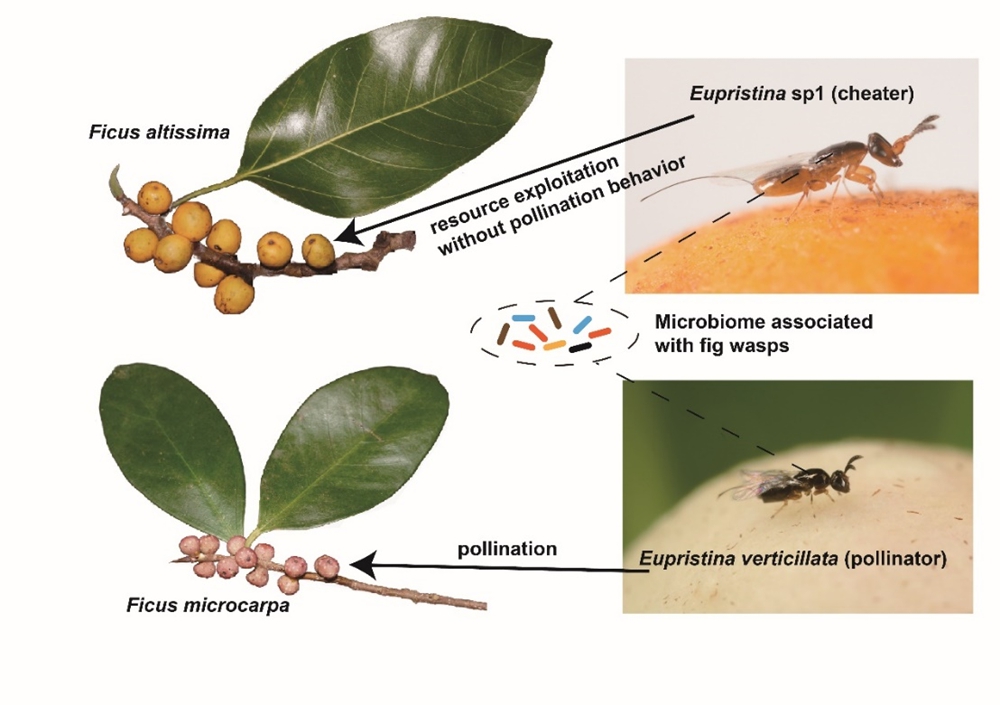The microorganisms can play critical roles in modulating plant-herbivore interactions. However, research has mainly focused on the crops and generalist insects. In the obligate pollinating systems, the cheater visitors are rare. However, the role of microorganism in this system still remains unknown.
In a study published in Frontiers in Microbiology, researchers from Xishuangbanna Tropical Botanical Garden (XTBG) explored the microbial diversity and potential metabolic functions in fig-wasp mutualism, which is a classic example of coevolution and obligatory pollinator system.
The researchers performed whole genome resequencing (WGS) on 48 individual fig wasps (Eupristina spp.) from Yunnan, China, to reveal the phylogenetic relationship and genetic divergence between pollinator and congeneric cheater wasps associated with the Ficus trees. They then extracted metagenomic sequences to explore the compositions, network structures, and functional capabilities of microbial communities associated with these wasps.
The study showed that the cheater and pollinator wasps are highly divergent genetic lineages. And their association microbial groups are extremely diverse, which may play essential roles in maintaining nutrient, health, and speciation of fig wasps. Besides, fig species dominate over the fig wasp genotype in shaping the microbial communities, which may help cheater to coexist with pollinators in figs.
“Our results provide novel insights into how microbiome community and metabolic functions may couple with the fig-wasp mutualistic systems,” said PENG Yanqiong of XTBG.
Contact
GAO Jie Ph.D
Key Laboratory of Tropical Forest Ecology, Xishuangbanna Tropical Botanical Garden, Chinese Academy of Sciences, Mengla, Yunnan 666303, China
E-mail: gaojie@xtbg.ac.cn

Figs and fig wasps. (Image by DONG Yiyi)

